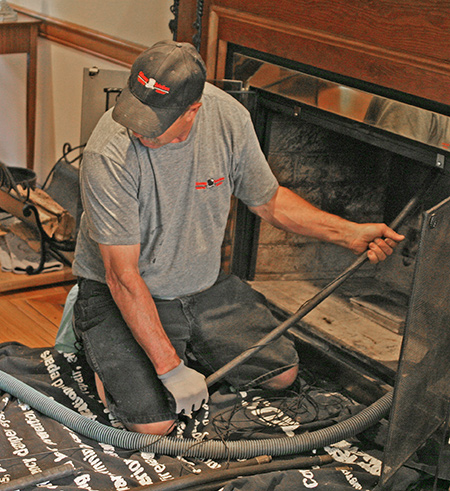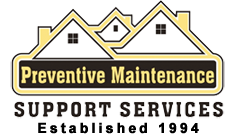
Chimneys are essential components of many homes, serving as conduits for venting smoke and gases from fireplaces and heating appliances. Proper chimney maintenance is crucial for safety, as neglect can lead to various types of chimney damage. In this article, we will discuss common types of chimney damage, their causes, and effective solutions for addressing them.
Types of Chimney Damage
- Cracked Chimney Crown:
- Causes: Exposure to extreme weather conditions, such as freeze-thaw cycles, can cause the chimney crown (the top masonry surface) to crack. Water infiltration and erosion are common culprits.
- Signs: Visible cracks in the chimney crown, water leaks, and masonry deterioration.
- Solutions: Repair or rebuild the chimney crown using weather-resistant materials like concrete or specialized crown coatings to prevent water intrusion.
- Chimney Leaks:
- Causes: Leaks can result from various sources, including cracked crowns, damaged flashing, deteriorating mortar joints, or missing chimney caps.
- Signs: Water stains on the walls or ceiling near the fireplace, dampness or water pooling in the firebox, or a musty odor.
- Solutions: Identify and repair the specific source of the leak, which may involve resealing flashing, repointing mortar joints, or installing a chimney cap.
- Mortar Joint Deterioration:
- Causes: Mortar joints between chimney bricks or stones can deteriorate over time due to exposure to weather, temperature fluctuations, and chimney use.
- Signs: Crumbling or missing mortar between bricks or stones, visible gaps, and loose bricks.
- Solutions: Repointing, or tuckpointing, involves removing deteriorated mortar and replacing it with fresh mortar to restore the structural integrity of the chimney.
- Chimney Liner Damage:
- Causes: Liner damage can result from exposure to acidic flue gases, chimney fires, or the natural wear and tear of an older liner.
- Signs: Smoke or fumes in the home, visible cracks or deterioration in the liner, and reduced appliance efficiency.
- Solutions: Repair or replace the chimney liner as necessary. Stainless steel liners are often recommended for their durability and resistance to corrosion.
- Creosote Buildup:
- Causes: Creosote is a byproduct of burning wood and other fuels in the fireplace or stove. When it accumulates inside the chimney, it can become a fire hazard.
- Signs: A thick, tar-like substance in the chimney, a strong smoky odor, or a roaring sound from the fireplace.
- Solutions: Regular chimney cleaning by a professional chimney sweep to remove creosote buildup and reduce the risk of chimney fires.
- Chimney Cap Damage:
- Causes: Chimney caps can deteriorate due to weather exposure, animal activity, or corrosion.
- Signs: Visible damage or missing chimney cap, debris or animal nests inside the chimney, and increased risk of water intrusion.
- Solutions: Replace the damaged cap with a new one or install a cap if none exists. A chimney cap helps prevent water, animals, and debris from entering the chimney.
- Chimney Settling or Tilting:
- Causes: Soil movement, inadequate foundation support, or age-related settling can cause a chimney to shift or tilt.
- Signs: Visible tilting or leaning of the chimney, cracks in the foundation, or gaps between the chimney and the roof.
- Solutions: Consult a structural engineer to assess the damage and recommend appropriate repairs, which may involve underpinning or chimney reconstruction.
- Spalling Brick or Stone:
- Causes: Spalling occurs when bricks or stones on the chimney’s exterior surface begin to break apart due to freeze-thaw cycles, water absorption, or age.
- Signs: Crumbled or flaking masonry, exposed brick or stone interiors, and visible deterioration.
- Solutions: Replace damaged bricks or stones, repoint mortar joints, and apply waterproofing sealers to prevent further moisture damage.
- Chimney Flashing Problems:
- Causes: Faulty or deteriorated chimney flashing, which seals the intersection of the chimney and the roof, can allow water to penetrate.
- Signs: Water leaks around the chimney, damaged or missing flashing, or rust and corrosion on existing flashing.
- Solutions: Repair or replace damaged flashing with durable, weather-resistant materials and ensure a proper seal to prevent water infiltration.
- Chimney Cap Seal Issues:
- Causes: Improper installation or deterioration of the sealant around the chimney cap can lead to leaks.
- Signs: Water infiltration around the chimney cap, water stains on the ceiling or walls, or visible gaps.
- Solutions: Properly seal the chimney cap using appropriate materials or seek professional assistance if the issue persists.
Addressing Chimney Damage
Addressing chimney damage effectively involves several key steps:
- Assessment: Begin by inspecting the chimney for visible signs of damage. If you are unsure or suspect more significant issues, consider hiring a certified chimney inspector or mason to conduct a thorough evaluation.
- Identify the Cause: Determine the underlying cause of the damage. Understanding what led to the problem will help you implement appropriate repairs or preventive measures.
- Consult Professionals: For complex or severe chimney damage, it’s advisable to consult with experienced chimney professionals, masons, or engineers. They can provide expert assessments and recommendations.
- Repairs or Replacements: Depending on the type and extent of the damage, proceed with the necessary repairs or replacements. Ensure that all work is done by qualified professionals who follow local building codes and regulations.
- Preventive Measures: To avoid future chimney damage, consider preventive measures such as regular chimney cleaning, inspections, and maintenance. Install a chimney cap to deter animals and debris, and waterproof the chimney to protect against moisture intrusion.
- Annual Inspections: Schedule annual chimney inspections and cleaning to identify and address potential issues before they escalate.
Conclusion
Maintaining a chimney in good condition is essential for both safety and efficiency. Different types of chimney damage can occur over time, including cracked crowns, leaks, mortar deterioration, liner damage, creosote buildup, cap damage, settling or tilting, spalling masonry, flashing problems, and cap seal issues. Addressing these issues promptly and effectively is crucial to prevent further damage and maintain the integrity of the chimney.
Regular inspections, professional assessments, and appropriate repairs or replacements are key steps in chimney maintenance. By understanding the causes of chimney damage and taking proactive measures, homeowners can ensure that their chimneys remain safe and functional for years to come.
